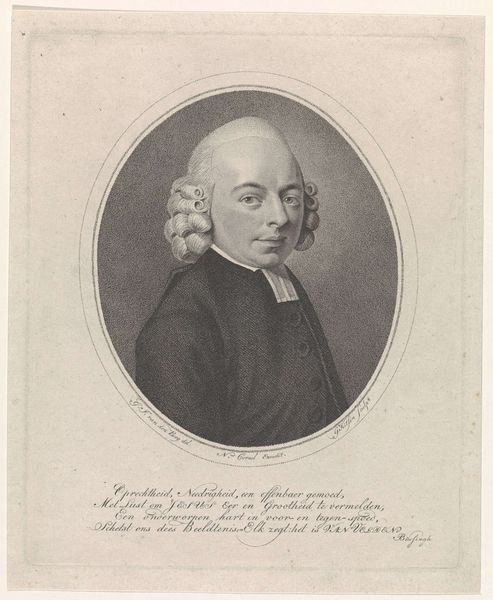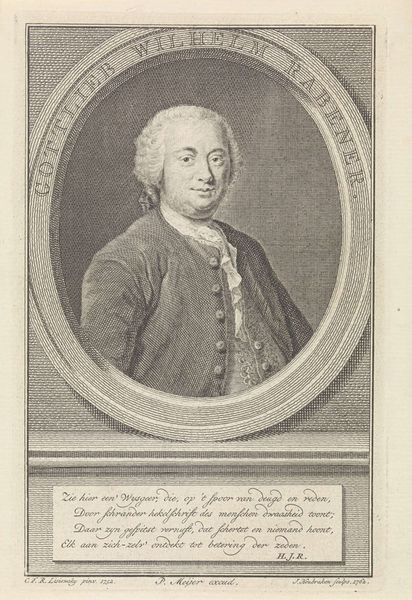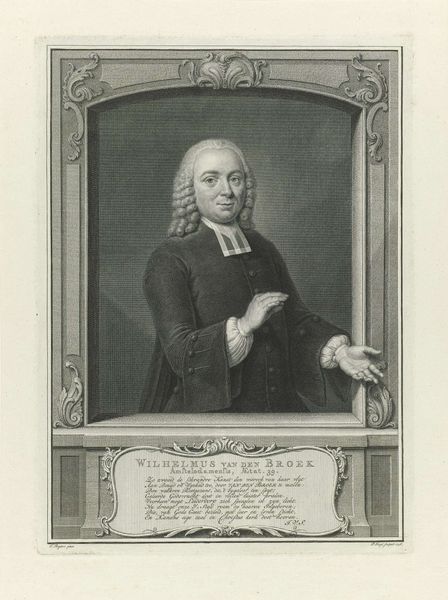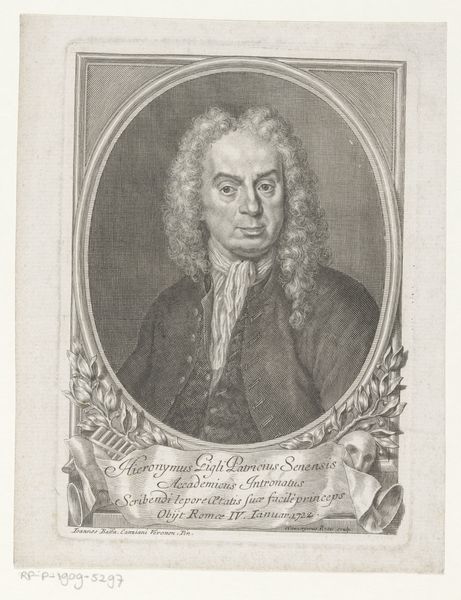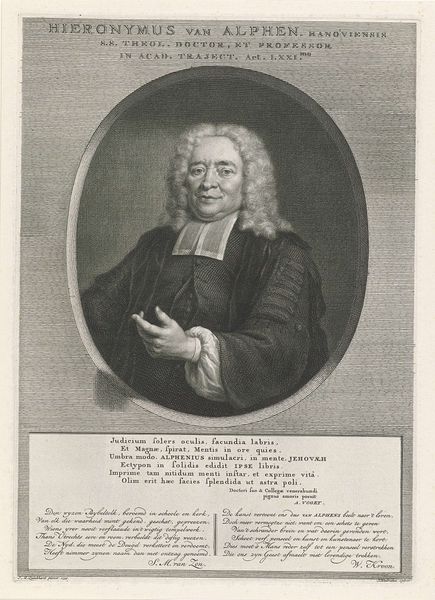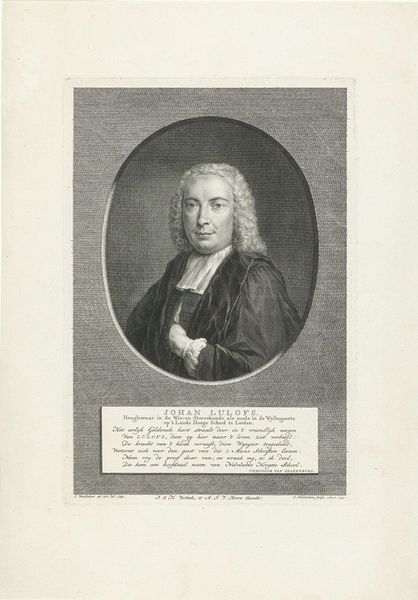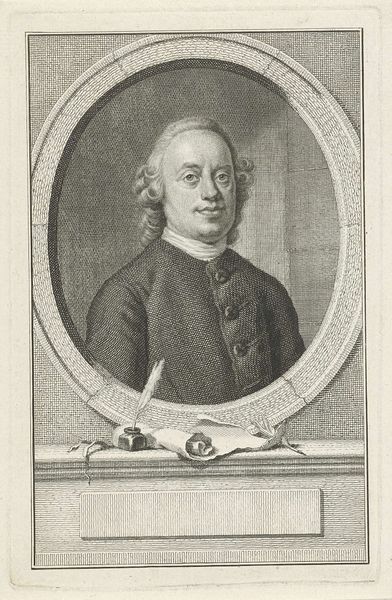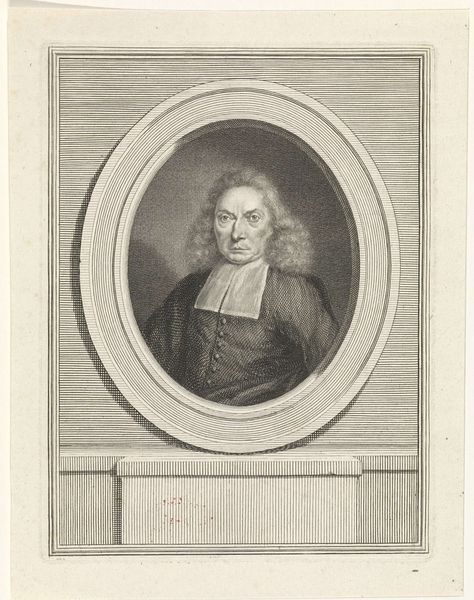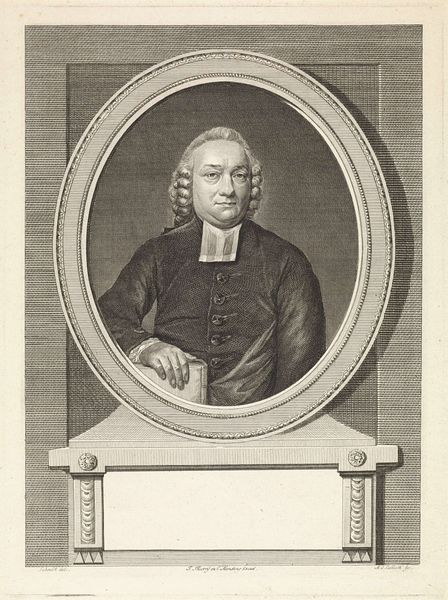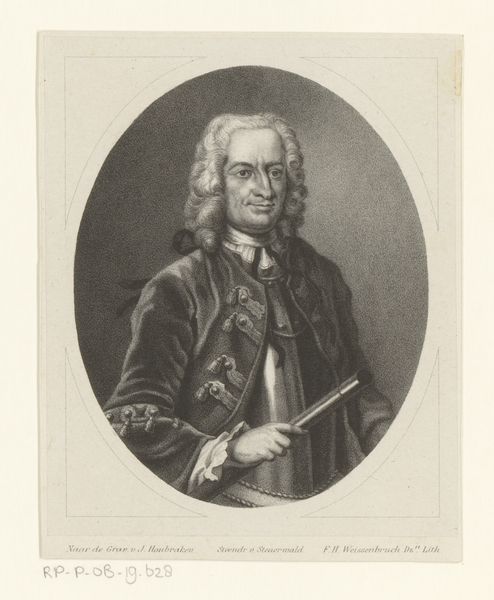
print, engraving
#
portrait
#
neoclacissism
# print
#
old engraving style
#
pencil drawing
#
history-painting
#
engraving
Dimensions: height 368 mm, width 285 mm
Copyright: Rijks Museum: Open Domain
Editor: Here we have Govert Kitsen's 1793 engraving, "Portret van Wesselus Knock," held at the Rijksmuseum. The starkness of the black and white, the rigid pose—it feels like a very formal and perhaps slightly austere depiction. What's your perspective on it? Curator: Beyond the formal elements, it's important to recognize portraiture from this period as deeply embedded in social and political messaging. What do you notice about the sitter’s attire and bearing? Think about what these details communicated to audiences in 1793. Editor: Well, he’s wearing what looks like religious garb, and his hand is gesturing slightly—almost like he’s making a point. He seems educated, someone of importance in the community perhaps? Curator: Precisely! And considering this was produced during a time of significant social upheaval with the French Revolution raging, such depictions of religious and community leaders served to reinforce existing social hierarchies. It’s a statement about order and tradition in a world that felt increasingly chaotic. Consider the power dynamics at play here – who gets immortalized, and whose story remains untold? Editor: So, it’s less about an individual likeness, and more about upholding a specific social narrative. That’s fascinating. I had assumed it was simply a record of this man's existence, but there’s so much more going on. Curator: Exactly. It encourages us to examine not just who is represented, but also who *isn't*, and the underlying power structures that determine these representations. Even in what seems like a straightforward portrait, we find layers of socio-political meaning. Editor: This has given me a new appreciation for historical portraiture. I’ll definitely look at these works through a different lens now, considering the historical context and social messages. Curator: Wonderful! Keep asking those critical questions; that's where true understanding begins.
Comments
No comments
Be the first to comment and join the conversation on the ultimate creative platform.
